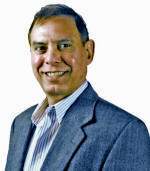|
What's News...
LTE on a Worldwide Roll
There are currently 393 wireless carriers and 138 countries that have deployed LTE networks including 64 in 39 countries that have deployed
LTE-Advanced, according to a Global Mobile Suppliers Association study, and there may be 460 LTE networks by year's end. Of these, about 30%
are employing carrier aggregation. There are also 16 operators that offer Voice over LTE (VoLTE) and to date 16 operators have launched
HD voice service enabled by VoLTE in 7 countries. The study says that the 1.8 GHz band is the most widely used worldwide for LTE with 45% of
LTE deployments followed by 2.6 GHz and 800 MHz.
VoLTE Gaining Steam
According to research organization Visiongain there should be 101.7 million VoLTE subscriptions worldwide by the end of 2015. In conjunction
with more LTE deployments, VoLTE is likely to become the next major competitive race among operators. Not only are they competing with each
other, carriers are also competing with third-party VoIP providers, according to Visiongain, and as LTE coverage becomes ubiquitous, voice services
will once again rise from their reduced position versus data in the global market. This will rapidly create a battleground over this massive
market.
DoD Focuses on Less-Expensive EW
The Department of Defense is trying to develop new, more cost-effective ways to buy electronic warfare equipment according to DoD's assistant
secretary for acquisition, as part of its Better Buying Power 3.0 initiative, which adds cybersecurity to weapons, IT, and other acquisitions.
While Buying Power 1.0 and 2.0 focused on streamlining the procurement process and making it more efficient, 3.0 looks at the overall situation
in the light of reduced budgetary allocations. Nevertheless, it also takes into account that while U.S. budgets may be declining, those of adversaries
are increasing, as is their technology base, which makes it essential that more be done with less.
Report: Military Radar Market to Grow Steadily But Modestly
Strategic Defense Intelligence projects that the global military radar market will increase 1.05% year-over-year through 2024. The largest
markets are expected to be in North America and Asia-Pacific, taking nearly three quarters of market share. The researchers believe that airborne
radar will be the hottest area, accounting for 42.5% of the market. Technology drivers include gallium nitride, advanced RF and digital technologies,
as well as reduction in the time required to detect, identify, and respond to threats.
|
Reducing Clutter -- and Cost -- in Base Stations
 By Sam Benzacar By Sam Benzacar
The fact that wireless traffic is outpacing the abilities of cellular infrastructure to handle it is hardly news. The good news for carriers
is that at the "back end" the proliferation of wireless hotspots and replacement of T1 lines with fiber and microwave links are mostly taking
care of backhaul. However, the situation is less rosy in the uplink and downlink paths and new frequency allocations up to 2.6 GHz are being
added, as spectrum at lower frequencies is spoken for. Carrier aggregation supported in LTE-Advanced as well as other spectrally-efficient enhancement
techniques will significantly help this situation.
Globally, there are more than 40 bands ranging from below 700 MHz to 2.7 GHz, although not all are used in a given country or region within
a country. However, take a look at the figure below (prepared by CNET) and you can see that as of last year there were 11 bands in active use
in the U.S. This doesn't include those proposed for use in the next few years. As each new frequency allocation requires more feedlines, antennas,
couplers, power combiners, filters, and other components, looking into a macro cell reveals a web of cables. So even though antennas can cover
multiple bands, the transmit outputs for different bands must be combined to feed them.

Bands Used by Major U.S. Wireless Carriers
The answer to this is multiplexing, in the form of duplexers that combine two bands, triplexers that handle three bands, quadruplexers up
to four bands, and so on. There is simply no more cost-effective, space-efficient way to multiplex transmit and receive paths into a single
antenna (or vice versa), or split signals from a single antenna into multiple base station receivers, allowing the system to accommodate a greater
number of operating bands. This also applies to small cells, which because they produce lower RF output powers, can use smaller multiplexing
devices.
Anatech Electronics has been designing and manufacturing multiplexers for more than 25 years and is actively addressing the need for greater
numbers of frequencies to be accommodated. They have very low passive intermodulation distortion, low loss, high isolation, and can be widely
customized to meet the needs of any customer.
For more information about Anatech's standard and custom multiplexing devices, please contact us at 973-772-4242 or send an email to
sales@Anatechelectronics.com.
|

 By Sam Benzacar
By Sam Benzacar

